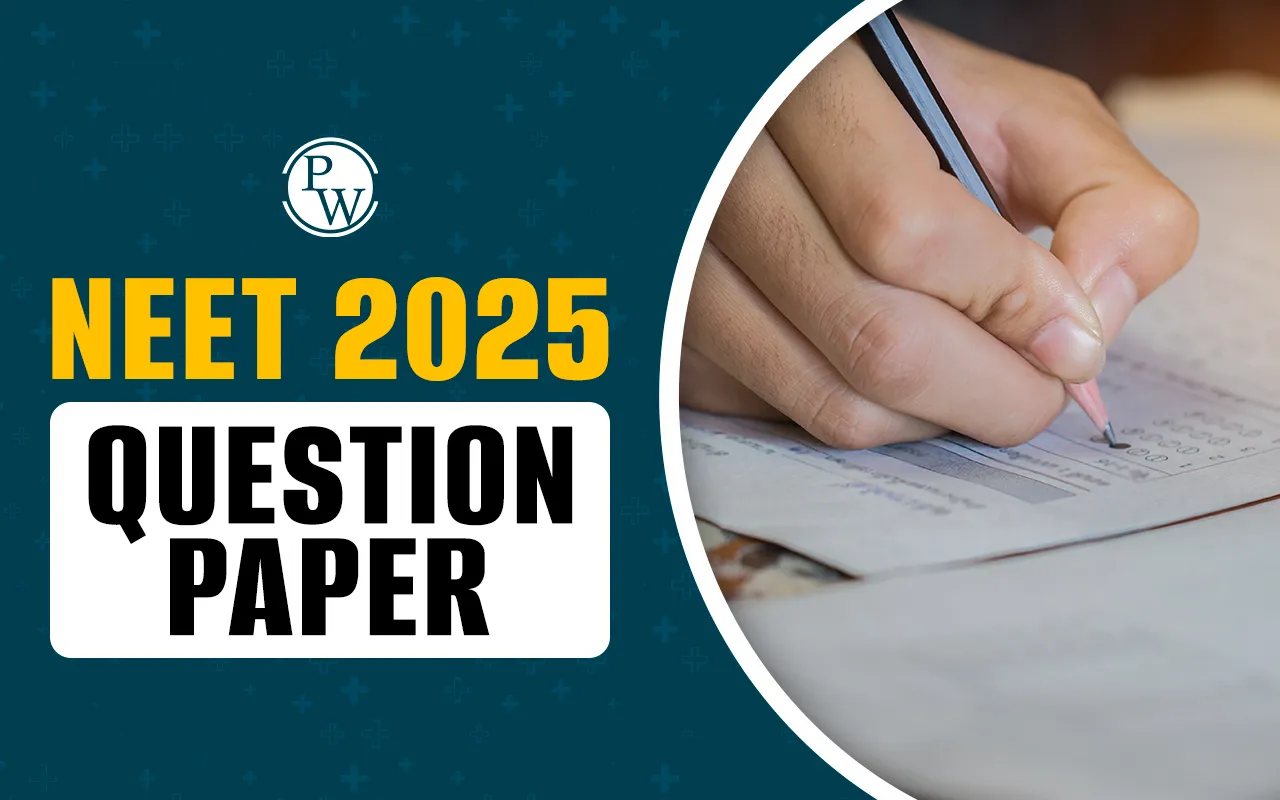
The difference between the forebrain, midbrain, and hindbrain is essential for understanding the structure and function of the human brain. The forebrain is responsible for sensory processing, complex reasoning, and managing endocrine functions. The midbrain controls motor movements and processes auditory and visual information, while the hindbrain regulates vital autonomic functions such as breathing, heart rate, and sleep cycles.
| NEET Biology Syllabus | NEET Biology Diagrams |
| NEET Biology MCQ | NEET Biology Chapter wise Weightage |
| NEET Biology Notes | NEET Previous Year Question papers |
These topics are essential in the NEET syllabus as they help students grasp key concepts in human physiology, making them important for both the exam and future medical studies.
Forebrain
The forebrain, also known as the prosencephalon, is the largest and most complex division of the brain , primarily comprising the cerebrum, along with critical structures such as the thalamus, hypothalamus, and pituitary gland . It is responsible for many higher-order functions that define individuality, including intelligence, memory, personality, emotion, speech, and motor skills.Components of the Forebrain
Within the inner region of the forebrain are several essential structures:- Cerebrum: The cerebrum holds the essential elements that define individual identity, including intelligence, memory, personality, emotions, speech, and motor functions.
- The cerebrum is divided into two hemispheres—right and left—which are linked by a band of nerve fibers known as the corpus callosum, facilitating communication between them.
- The left hemisphere is typically associated with logical and analytical thinking, while the right hemisphere is linked to creativity and intuition.
- Thalamus : This structure is responsible for relaying sensory information from organs such as the eyes, ears, and skin to the cerebral cortex.
- Hypothalamus : This region regulates vital bodily functions, including pulse, thirst, appetite, and sleep patterns. It also governs the pituitary gland, which produces hormones that influence growth, metabolism, and the body’s response to stress.
- Pituitary Gland : Known as the "master gland," it plays a crucial role in hormone production, impacting various bodily processes.
Midbrain
The midbrain, also known as the mesencephalon, is the second major region of the brain, positioned above the brainstem. It plays a crucial role in processing auditory and visual information, functioning primarily as a relay system that transmits essential data for hearing and vision. An integral component of the central nervous system, the midbrain is situated below the cerebral cortex and above the brainstem.Components of the Midbrain
The midbrain consists of key components including the tectum, Colliculi cerebral aqueduct, tegmentum, and cerebral peduncles.- Tectum : The dorsal section of the midbrain features four rounded lobes, known as the corpora quadrigemina. The superior colliculi are responsible for processing visual information, while the inferior colliculi handle auditory signals.
- Colliculi : The colliculi, meaning "hill" in Latin, include the superior and inferior colliculi. The superior colliculi process visual information before sending it to the occipital lobe, while the inferior colliculi handle auditory signals, relaying them to the thalamus for further processing.
- Tegmentum : The tegmentum, meaning "hood," extends along the brainstem and includes areas such as the red nucleus, which coordinates movement, and the periaqueductal gray, involved in pain suppression. It also contains pathways that promote alertness.
- Cerebral Aqueduct: This canal runs through the midbrain and connects the third and fourth cerebral ventricles, facilitating the flow of cerebrospinal fluid.
- Cerebral Peduncles: Comprising thick bundles of nerve fibers, the cerebral peduncles connect the forebrain with the hindbrain, playing a key role in communication between these regions.
Hindbrain
The hindbrain, also known as the rhombencephalon or lower brain, is situated at the posterior part of the head and appears as an extension of the spinal cord. It comprises three primary structures: the medulla oblongata, pons, and cerebellum , which together are known as the brainstem. The hindbrain is primarily responsible for coordinating autonomic functions crucial for survival.Components of the Hindbrain
The hindbrain consists of three major components:- Pons : The pons connects the brainstem to the cerebral cortex and acts as a coordination center for communication between the brain's hemispheres and the spinal cord. It contains four cranial nerves that regulate eye movement, facial sensations, auditory processing, and chewing.
- Cerebellum : Located behind the pons, the cerebellum, or "little brain," has two hemispheres and a complex structure of gray and white matter. It coordinates sensory information with muscle responses to facilitate voluntary movements and helps maintain balance and posture through nerve impulses from the inner ear.
- Medulla Oblongata : The medulla oblongata is situated at the lower region of the brainstem and serves as a conduit between the brain and the spinal cord. It controls vital autonomic functions, such as heart rate, blood pressure, and breathing, and manages involuntary reflexes like swallowing and sneezing.
- Cranial Nerves : The medulla also gives rise to four important cranial nerves involved in taste, vocalization, head and neck movements, and tongue function.
Difference Between Forebrain Midbrain and Hindbrain
Here's a concise table outlining the differences between the forebrain, midbrain, and hindbrain:| Difference between Forebrain, Midbrain, and Hindbrain | |||
|---|---|---|---|
| Aspects | Forebrain | Midbrain | Hindbrain |
| Location | The anterior part of the brain | Topmost part of the brainstem | Lower part of the brainstem |
| Main Structures | The cerebrum, thalamus, hypothalamus | Tectum, cerebral aqueduct, tegmentum, cerebral peduncles | Medulla oblongata, pons, cerebellum |
| Development | Develops from the prosencephalon | Develops from the mesencephalon | Develops from the rhombencephalon |
| Subregions | Divided into diencephalon and telencephalon | Comprises mesencephalon | Divided into metencephalon and myelencephalon |
| Functions | Processes sensory information, language, and emotions | Processes auditory and visual information; regulates movement and alertness | Controls autonomic functions like respiration and heart rate; maintains balance and coordination |
| Cranial Nerves | Contains optic and olfactory nerves | Contains oculomotor and trochlear nerves | Contains trigeminal, abducens, facial, vestibulocochlear, glossopharyngeal, vagus, accessory, and hypoglossal nerves |
| Major Responsibilities | Regulates temperature, appetite, memory, and emotions | Connects forebrain to hindbrain; involved in sleep-wake cycles | Coordinates movement, maintains equilibrium, and relays sensory information |
Difference between Forebrain, Midbrain and Hindbrain FAQs
Q. What are the main functions of the forebrain, midbrain, and hindbrain?
Ans. The forebrain processes sensory information, controls voluntary movements, and regulates emotions, memory, and body temperature. The midbrain connects the forebrain to the hindbrain and manages visual/auditory processing and movement, while the hindbrain controls vital functions like breathing, heart rate, and balance.
Q. What is a forebrain?
Ans. The forebrain is the largest and most complex part of the brain, responsible for higher cognitive functions like reasoning, memory, and voluntary motor activities. It includes key structures such as the cerebrum, thalamus, and hypothalamus.
Q. What is the largest part of the brain?
Ans. The cerebrum, which is part of the forebrain, is the largest part of the brain. It controls higher brain functions like sensory processing, voluntary movements, language, and complex thought processes.
Q. Who discovered the hindbrain?
Ans. The study and understanding of the hindbrain’s structure and function have evolved over centuries through contributions by many scientists, but the term "rhombencephalon" (hindbrain) was formalized by German anatomist Wilhelm His Sr. in the 19th century.
Q. What is the largest part of the hindbrain?
Ans. The cerebellum is the largest part of the hindbrain. It plays a crucial role in maintaining balance, posture, and coordinating voluntary muscle movements.
Q. What are the three divisions of the brain?
Ans. The brain is divided into three main parts: the forebrain, the midbrain, and the hindbrain.
🔥 Trending Blogs
Talk to a counsellorHave doubts? Our support team will be happy to assist you!

Check out these Related Articles
Free Learning Resources
PW Books
Notes (Class 10-12)
PW Study Materials
Notes (Class 6-9)
Ncert Solutions
Govt Exams
Class 6th to 12th Online Courses
Govt Job Exams Courses
UPSC Coaching
Defence Exam Coaching
Gate Exam Coaching
Other Exams
Know about Physics Wallah
Physics Wallah is an Indian edtech platform that provides accessible & comprehensive learning experiences to students from Class 6th to postgraduate level. We also provide extensive NCERT solutions, sample paper, NEET, JEE Mains, BITSAT previous year papers & more such resources to students. Physics Wallah also caters to over 3.5 million registered students and over 78 lakh+ Youtube subscribers with 4.8 rating on its app.
We Stand Out because
We provide students with intensive courses with India’s qualified & experienced faculties & mentors. PW strives to make the learning experience comprehensive and accessible for students of all sections of society. We believe in empowering every single student who couldn't dream of a good career in engineering and medical field earlier.
Our Key Focus Areas
Physics Wallah's main focus is to make the learning experience as economical as possible for all students. With our affordable courses like Lakshya, Udaan and Arjuna and many others, we have been able to provide a platform for lakhs of aspirants. From providing Chemistry, Maths, Physics formula to giving e-books of eminent authors like RD Sharma, RS Aggarwal and Lakhmir Singh, PW focuses on every single student's need for preparation.
What Makes Us Different
Physics Wallah strives to develop a comprehensive pedagogical structure for students, where they get a state-of-the-art learning experience with study material and resources. Apart from catering students preparing for JEE Mains and NEET, PW also provides study material for each state board like Uttar Pradesh, Bihar, and others
Copyright © 2025 Physicswallah Limited All rights reserved.
Get App









